
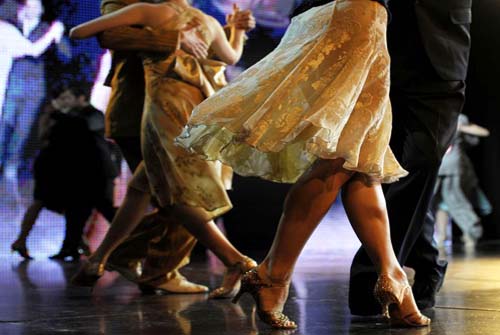 |
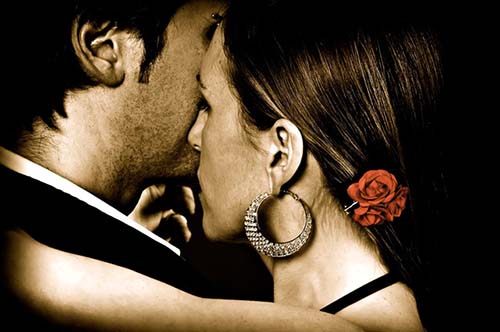 |
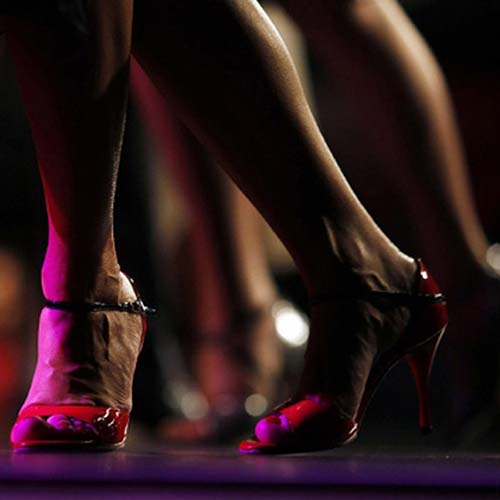 |
Milonga is a word of Hispanic origin, it defines first of all a musical genre belonging to the Music of Tango, and precisely the Milonga Tango.It is a popular music that is very widespread in the Rio de la Plata regions, which is usually accompanied by the guitar. So the music of the milonga is in all respects part of the rich repertoire of Argentine tango. It is a folk music genre of the Rio de la Plata, typical of Argentina and Uruguay and is presented in two ways. On the one hand, the milonga campera, pampeana or surera, which is the original form of the milonga. On the other hand, the city milonga, a later musical style. His first recording was "Un Bailongo", composed and written by the African-Argentine José Ricardo, sung by Carlos Gardel and his music performed by Guillermo Barbieri and by José Ricardo himself. |
If you use the Streaming Services you can listen here to a playlist dedicated to the Music of the dance Milonga. Download and store the Paylist you like most in your music library to be able to listen to it whenever you want on the different Streaming platforms Spotify, Apple, Youtube Music, Amazon Unlimited, Tidal or Deezer
Click here or on the photo Happy Listening!
The term Milonga is also used to define a couple dance from which Argentine Tango derives. Milonga is a folk dance of Uruguayan origin that derives from the more common Habanera, imported from South America at the beginning of the 19th century, to which the rhythm of 6/8 has been replaced with a simpler and more linear 2/4. The latter rhythm is much more suited to a ballroom dance than the habanera even if, due to their similarity, the milonga was often also called the habanera of the poor. Subsequently, however, the tango took away a lot of popularity from the milonga as a dance, which was in fact soon confused with the tango itself. From this derives the definition of milonga tango, that is a type of tango with a slightly faster adaptation and a much more marked rhythm.
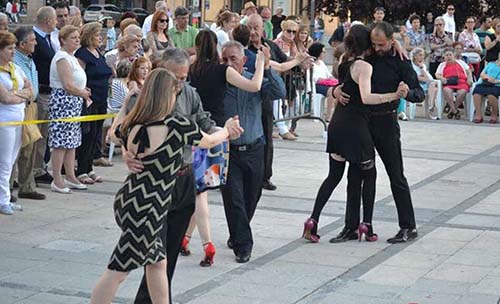 |
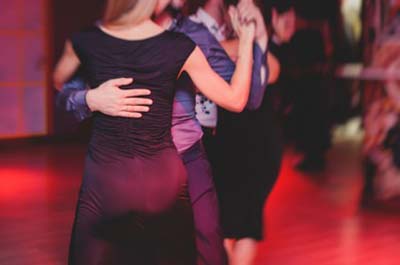 |
And even more: it is today one of the most eloquent musical expressions. The Candombe dance was so strong, deep and essential that instead of having disappeared, it survived, overcoming every barrier and repression. It has so imbued our society that it has become a cultural element that identifies Uruguay. Instead, going back to talking about the music of the Milonga, it coexisted with the habanera, but reigned in very humble social environments. For this reason it has even been called the habanera of the poor. There is also an ancient Uruguayan variant, apparently exclusive to the city of Montevideo, called Milongon
The Milonga as a couple dance, and not to be confused with the ballroom for the tango, is a style characterized by very contained movements that are performed in confined spaces.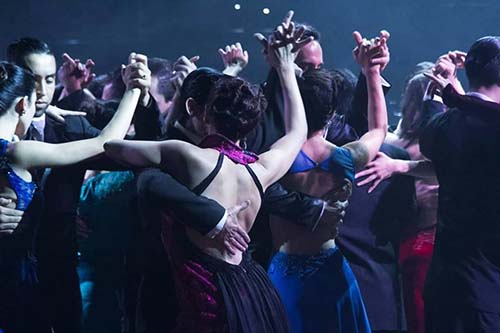 |
We dance with a very close passionate embrace, with a very sensual and elegant style. The milonga dance is one of the most practiced types of dance in the Argentine Tango family and above all one of those considered more fun. Among the main features of the Milonga is the speed of the dance which can be understood as a kind of very tight embrace that incorporates tango steps with a slightly faster pace. In fact, we dance with a time of 4/4, instead of the classic tango time of 2/4, even if in some cases there are some melodies that recall a kind of different calculation. Each beat should correspond to a step but this also depends on the types of Milonga that are being danced. |
| In fact, there are the Milonga Lisa and the Milonga traspiè. The Milonga Lisa is that dance in which each beat gives life to a step, while the Milonga traspiè is the one a little more complicated and which involves syncopated dance steps where counter-tempo is used. This is precisely the very essence of the Milonga as a dance that involves weight changes, that is, contrapasos that give those who are dancing the opportunity to be able to wrap the music in their own movement in a very sensual and elegant way. | 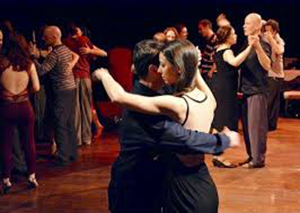 |
Milonga is a type of tango that is based, like all other types of tango, on improvisation. When you want to dance the Milonga, the important thing is that you do not take steps against the flow, that is, against the sense of dance while you have to wait to go towards the center of the dance floor. To create a milonga tango it will be advisable to have the more experienced dancers positioned outside the dance floor while the less experienced dancers are placed inside. It is a way to guarantee them greater speed.
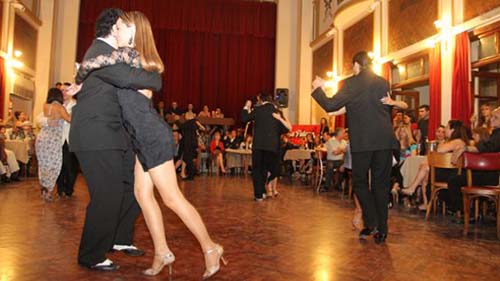 |
The steps of the milonga are not quite the same as those of the Tango, they change to meet the rhythm, they are adapted to be performed in an elegant way on this faster tempo. Dancing a Milonga is not dancing a Tango quickly. The ochos become narrower for the woman and the position of the man also changes. The extension of the steps is reduced. It becomes natural to resort to traspiè, following the rhythm with setbacks, hints that looking at them seem like brief "bounces". |
|
The connection in the couple is very high, in fact the type of "brand" also changes, that is the way in which the man proposes a step to the woman. There is no time to do the advances and the preparation that can be done in a Tango, communication is much more linked to the fluid movement of the whole body, also playing with the nuances to make the dance fun and playful. |
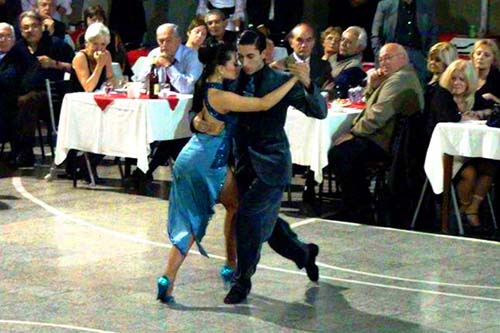 |
| - lisa and traspié rhythmic walk - basic square in 6 steps - rhythmic cadence on the spot - rebote or rebound - ochos, small steps with a woman's pivot - sentada, the woman sitting on the man's legs |
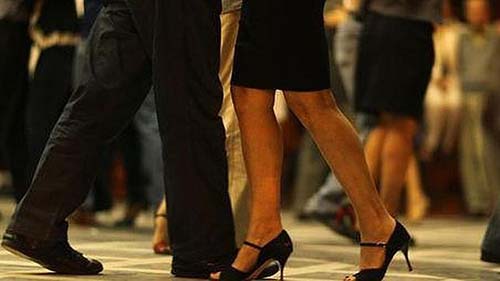 |
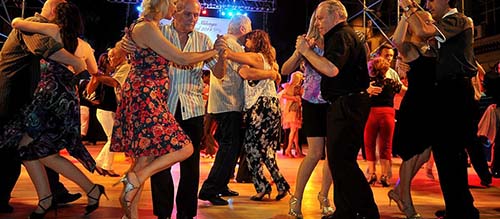
|
|
The milonga therefore, in addition to being a musical genre and a dance, also has a third meaning: La Milonga denotes the physical place of meeting and practice to dance the Argentine Tango. Or rather the milonga is the dance place where you meet to listen to music and dance the milonga, such as tango, tango vals or vals criollo. The milonga is prior to the other two genres so by extension it was adopted, at the beginning of the nineteenth century, to define both the milonga dance and the place where people go to dance. When this type of dance took hold, the common dance hall or ballroom took the slang name of milonga. The milonga is usually a very large space with a particularly smooth floor and often surrounded by tables for the dancers. The couples dance along a "dance line" more precisely called "Ronda", ie along the outer contour of the free space and proceed in an anti-clockwise direction. |
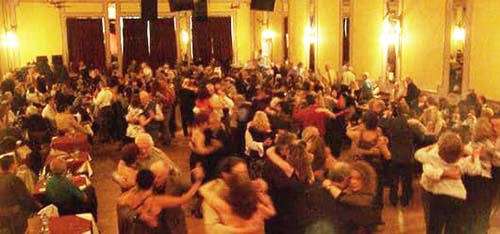
If you use the Streaming Services you can listen to a playlist here as if you were in a milonga or divided into tandas y cortinas, all to be danced Music of the dance Milonga. Download and store the Paylist you like most in your music library to be able to listen to it whenever you want on the different Streaming platforms Spotify, Apple, Youtube Music, Amazon Unlimited, Tidal or Deezer
Click on this link to find it Happy Listening!
Dancing Tango in Rome |
Discover the Tango Allegria event closest to you.
|
Our Community |
Join our group and make new friends around the world. |
|
Seguici su
|
Tango and not only Tango |
Discover new passions organised by our Tango friends. |
Tango Allegria is the association that from the heart of Italy brings the passion for Argentine tango to the world, organizing unforgettable holidays, trips and events. If you love dancing, traveling, meeting new people and experiencing authentic emotions, you are in the right place.
Discover our tango holidays in exclusive locations: at the seaside, at the spa, in cities of art or in the middle of nature. Each experience combines tango, relaxation and fun.
Throughout the year we organize Argentine tango events with internationally renowned Argentine masters, intensive seminars, evening milongas, thematic courses and guided practices. Each event is an opportunity to improve your dance and share your passion in a welcoming and engaging environment.
With Tango Allegria you don't just experience tango, but also the beauty of the journey, the pleasure of wellbeing and the joy of meeting.
Our events are designed for everyone: beginners, intermediates and expert dancers.
📅 Upcoming Events |
Do you want to stay updated on tango trips, special events, study weeks and exclusive offers?
Sign up for our newsletter and start living tango with us.
Since 2003 we have been bringing tango wherever there is a desire to get excited, learn and dance. We are waiting for you for a unique experience.